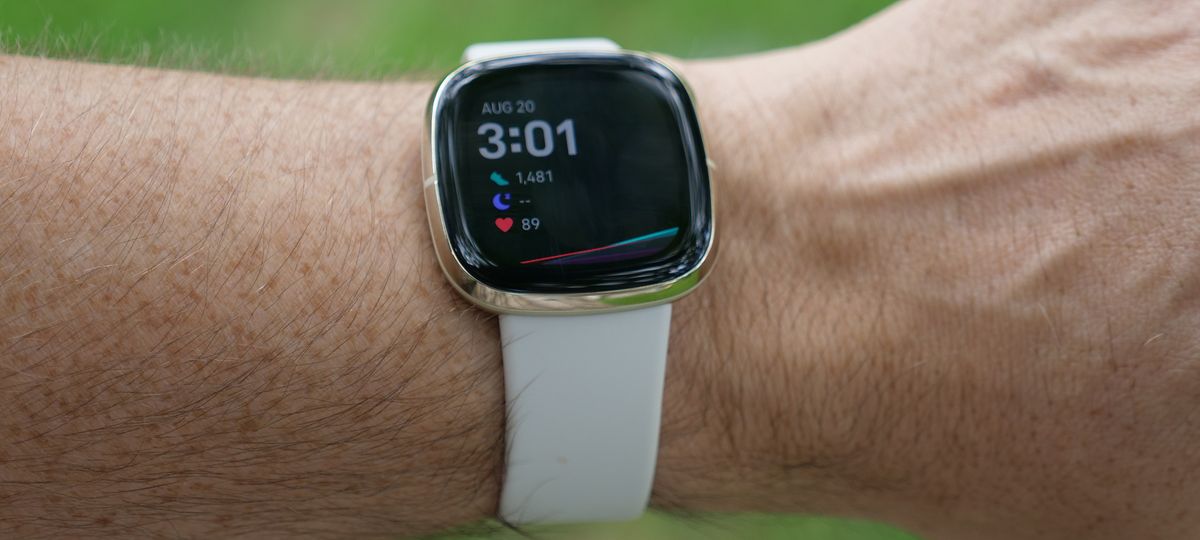Laptop Mag Verdict
The Fitbit Sense might be expensive, but its robust health and fitness tracking combined with excellent battery life justify its price.
Pros
- +
Excellent battery life
- +
Reliable fitness tracking
- +
Intuitive app
- +
Extensive health tracking
- +
Stylish and unobtrusive design
Cons
- -
Expensive
- -
Relatively small app catalog
- -
Uncertain future
Why you can trust Laptop Mag
Price: $299
Display: 1.58-inch AMOLED touchscreen (336 x 336 pixels)
Mobile Payments: Yes
Connectivity: Wi-Fi, Bluetooth, NFC
Battery: 3-7 days
Water resistance: 50m (164 feet)
Size: 1.59 x 1.59 x 0.49 inches
Weight: 1.62 ounces (small band); 1.7 ounces (large band)
The Fitbit Sense is the most expensive Fitbit smartwatch to date and its $299 price may cause your heart to skip a beat. But don't worry, Fitbit Sense can detect that for you and let you know that everything is going to be alright.
A brief look at its features helps explain the relatively high price. The Sense matches or surpasses any other smartwatch on the market when it comes to health tracking and still delivers the fitness tracking that Fitbit is known for along with solid smartwatch functionality.
With the addition of ECG monitoring, a SpO2 sensor, and improved heart rate monitoring, the Fitbit Sense feels like there's a tiny medical lab on your wrist. It unobtrusively monitors all of your workouts and delivers a comprehensive picture of your overall health via its well-designed app.
While Apple Watch 7 and the Samsung Galaxy Watch 4 draw most of the attention, the Fitbit Sense belongs up there with them in the discussion for the best smartwatches.
- Apple Watch 7 vs. Fitbit Sense: Which smartwatch is right for you?
- Fitbit + Victor Glemaud knit bands: A stylish change of pace for Fitbit owners
Fitbit Sense price and configurations
The Fitbit Sense is $299 and is available in three different color options: Silver with a Sage Grey band, Graphite with a Carbon band, or Soft Gold with a Lunar White band.
All three models are otherwise identical and include a free 6-month trial for Fitbit Premium. That is the company’s subscription service that costs $9.99/month or $79.99 per year and offers Sense users more advanced health insights, guided programs, workouts, mindfulness sessions, advanced stress management tools and premium challenges. None of this is necessary for the core functioning of the watch and you still receive all of the health data from in the app.
Its most direct competition is the Apple Watch SE and the new Galaxy Watch 4. However, at this price point, both watches undercut it slightly at $249. The Fitbit Sense has quite a few health tracking advantages over those devices along with considerably longer battery life.
Fitbit Sense design
While many associate Fitbit with its band-style fitness trackers, the Fitbit Sense reflects an evolution of the rounded square design that the Fitbit Versa introduced in 2018. It inevitably draws comparisons to the Apple Watch, which is a compliment as it matches the fit and finish of Apple’s popular wearable but with enough unique details to stand out on its own.
My review unit is the Soft Gold model which has a highly reflective gold band framing the display. This gives way to a matte gold finish on the bottom of the watch. A thin gold antenna strip divides the two for improved connectivity that may otherwise be obstructed by the stainless steel body of the watch.
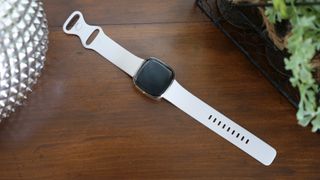
There are no obvious buttons on the Fitbit Sense, but a slight indentation on the left side is a capacitive button that you trigger by covering it. It can be confusing at first, but I found that covering it with my thumb and then applying slight pressure by holding the other side of the watch with my pointer finger worked reliably. You get a slight vibration when it is triggered; a short press turns the display off or on and a long press can trigger a custom action that you select like Google Assistant or the Music Controls.
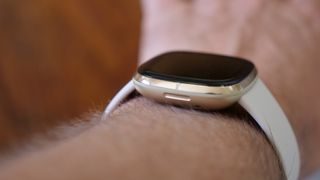
Fitbit Sense is water-resistant up to 50 meters (164 feet) and is designed to be used when swimming. At that depth, even recreational diving with the Fitbit Sense is safe, so if you are a water sports enthusiast, the Fitbit Sense is a good match.
The Fitbit Sense includes what it calls the Infinity Band in the box in both large and small sizes. It’s a soft-touch rubber that conceals the excess band below it, providing a sleek and seamless look. The bands are easily swappable and there are hundreds of designs available through Fitbit and third-party manufacturers, but the Infinity Band is a nice starter option as it is fitness-friendly, comfortable, and subtle.
Fitbit Sense display
The Fitbit Sense features a 1.58-inch AMOLED touchscreen with a 336 x 336-pixel resolution and up to 1,000 nits of brightness.
The display is easy to read in any environment, which is fantastic because struggling to see your watch while in the middle of a long run or ride is aggravating. The touchscreen was responsive and reliable with taps and swipes allowing me to navigate through the watch quickly.
The display was responsive when lifting my wrist to engage the screen so I didn’t need the always-on mode. That said, if you never want to find yourself staring at a blank watch then always-on is the answer. Of course, you’ll just need to charge more frequently with it enabled though you can save some juice by selecting one of the lower brightness settings.
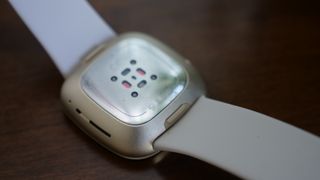
Fitbit Sense health tracking
I’ll get to fitness tracking shortly, but I want to tackle health tracking first as this is where the Fitbit Sense stands out against the rest of the Fitbit lineup and a number of its smartwatch competitors.
The Fitbit Sense includes an ECG sensor, SpO2 monitoring, an on-wrist skin temperature sensor, and an EDA scanner. Now I’ll get to what all of that means.
ECG sensor
The Fitbit Sense joins the Apple Watch 6 and the Samsung Galaxy Watch 3 (soon the Galaxy Watch 4 as well) as the only smartwatches to have FDA approval for its ECG (electrocardiogram) sensor. This allows your Fitbit Sense to monitor your heart for signs of atrial fibrillation (AFib), a heath rhythm irregularity that can be a sign of a serious health condition. The feature has garnered considerable attention as it can be life-saving if it helps to catch an unknown issue early.
SpO2 monitoring
This is a feature that has drawn particular attention over the last year as a drop in SpO2 levels can be an early sign of Covid-19. Unlike the ECG sensor, Fitbit Sense does not have FDA approval for SpO2 monitoring. Much like the Apple Watch 6, the reflective sensor the Fitbit Sense uses doesn't provide a reliable enough reading compared to the transmissive sensors used by medical professionals.
You can select a watch face that provides your SpO2 level, but you cannot trigger a scan; instead, this happens passively while you are sleeping. There is a very fine line between good and catastrophically bad SpO2. Officially, 95% is the threshold below which you should be concerned so an error of a few percentage points isn’t acceptable. At the same time, as someone that nearly died of necrotic pneumonia that could easily have been caught earlier with a SpO2 reading, I can see even a marginally accurate reading being helpful.
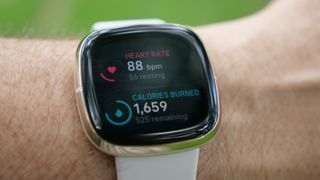
Skin temperature sensor
This is precisely what it sounds like, a feature that measures your skin temperature over time, which can be an indicator of health trends, particularly when combined with some of the other health data gathered by Fitbit Sense. Again, this happens without your direct action at night.
EDA sensor
Unique to the Fitbit Sense, tracking your (electrodermal activity) EDA can provide insights into your stress levels. This one isn’t passive as it requires you to trigger a scan and hold your palm over the watch during the scan. The watch will then ask how you are feeling and offer to walk you through a mindfulness session to help you de-stress.
Heart rate tracking
I’ll address this more in the fitness tracking section below, but Fitbit Sense does provide some basic information about your heart rate independent of exercise. It will alert you if your heart rate is particularly high or low or if it detects significant heart rate variability, which can reflect stress, fatigue, or certain health conditions. Fitbit Sense tracks your heart rate 24/7 to give you a complete picture of your heart rate over time.
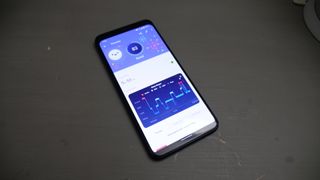
Fitbit Sense fitness tracking
Fitbit has come a long way since simple step tracking. The built-in GPS in the Sense more accurately tracks your outdoor fitness activities like running, hiking or biking. The Fitbit Sense also will automatically recognize over 20 different activities to record your exercises accurately or, if you proactively select your exercise, you can monitor your stats in real-time.
As I mentioned in the design section, the Fitbit Sense is also water-resistant up to 50 meters and can be used to track your swimming, so a full triathlon is no problem for the Sense.
Heart rate tracking is also a significant component of your fitness tracking as it will provide you with a real-time look at what heart rate zone you are in during your exercise. This is crucial information depending on your fitness goals as different zones will help you burn fat, promote cardio health, or show when you are hitting your peak effort.
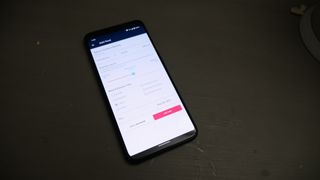
If you are just using the Fitbit Sense for general fitness tracking and aren’t too granular about it, features like Run Detect and Auto-pause can kick in automatically and make the tracking completely frictionless. I found that enabling the features can drop a tenth of a mile or even two-tenths. I want as complete a picture of my run as possible, so I always manually trigger the activity from the watch.
The first time you connect the GPS, it can take 2-3 minutes to get a lock, after that, it should only be 8-10 seconds. I found the GPS tracking to be reasonably reliable, but not quite as accurate as my phone. Given its size, this isn’t shocking and my running route is somewhat challenging as it features several bridges, which cause the watch to drop out and regain the connection then piece together what happened. It’s typically only off by a couple of tenths of a mile, which is fine for my basic health and fitness tracking. That said, it's something data-driven athletes should keep in mind.
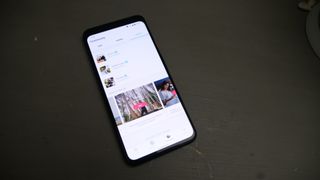
Beyond the calories you burn, the Fitbit app will also track the calories you take in. You can log foods quickly and easily with barcode scanning or the search feature. The food database is comprehensive with entries for many restaurants and you can create new entries for your own recipes. This all works with your weight goals to give you an idea of where you stand throughout the day and simplifies weight loss, weight gain, or maintenance.
While it isn’t specifically fitness tracking, one strength of Fitbit that people tend to ignore is the community aspect. The app lets you set a variety of challenges so you can compete with friends and family. Fitbit has a strong community of users and adding new friends is simple. This can be a great motivator to get out and exercise and is an undersold component of the company's products.
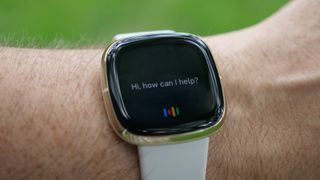
Fitbit Sense smartwatch features
While it is unquestionably focused on your fitness, the Fitbit Sense crosses over into the smartwatch realm with a number of extra features that bring it closer to the Apple Watch or Galaxy Watch than basic fitness trackers.
When paired with your phone, you can take calls on your Fitbit Sense with the built-in speaker and mic. Text messages will also show up on your Fitbit Sense and, if you are using an Android phone, you can reply to them with voice-to-text.
Google Assistant and Alexa are also on-board, sorry no Siri. These voice assistants can handle any basic questions or tasks and provide tappable follow-up suggestions on screen. If the feature is outside of the scope of what it can do, it will direct you back to your phone.
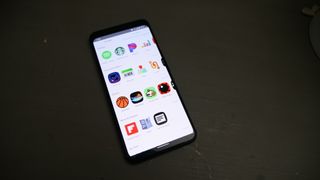
You can download new apps and watch faces from the Fitbit app. It’s nowhere near as comprehensive as Wear OS or the Apple Watch App Store, but it covers many of the most popular apps including Spotify, Pandora, and Deezer for streaming music and store accounts like your Starbucks Card or Walgreens. You can also access transportation apps like Uber or American Airlines. There are even news apps like Flipboard and simple games to help pass the time.
Fitbit Pay allows you to make payments via NFC anywhere that contactless payments are accepted.
While it may not offer everything that you get from Apple, Samsung, or Google, Fitbit has a robust enough collection of built-in and downloadable apps that it meets the smartwatch needs of most users.
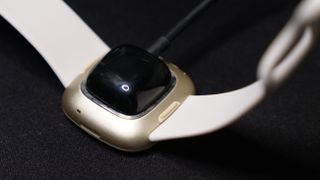
Fitbit Sense battery life and charging
Battery life is one feature where Fitbit crushes the Apple Watch and Wear OS competition. The Fitbit Sense can last six days or more depending on your settings and usage.
During my testing, I made it into a seventh day on a single charge with the always-on display off while relying on step tracking rather than triggering the GPS for run tracking. If you are using the Fitbit Sense primarily for its health tracking and don’t make extensive use of the GPS, expect 5 to7 days of battery life.
Pushing things in the other direction, I enabled the always-on display and used the GPS for at least 45 minutes of run tracking a day. With this usage, I needed to charge at the end of the third day as I was down to 12% battery life. GPS is by far the most battery-hungry feature on the Fitbit Sense; the company claims it will last through 12 hours of continuous GPS use.
When you need to charge up again, the Fitbit Sense uses a magnetic wireless charger that snaps on easily to the back of the watch and will quickly charge to about a day’s worth in 12 minutes. A full charge takes just over an hour.
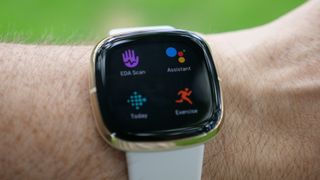
Bottom line
As a longtime Fitbit Versa user, I'm glad to see the Fitbit Sense make a significant leap forward while still feeling familiar. Fitness tracking is more robust and reliable than ever and does an excellent job of displaying the data for you in the app to help you stay on track with every aspect of your health.
It’s the growth of the other health sensors and tracking that amazed me the most with features like ECG monitoring as potentially life-saving additions to the device. That this is possible with a device that remains so lightweight and unobtrusive is remarkable.
If those additional health sensors aren’t as compelling to you then the Fitbit Versa 3 delivers a nearly identical experience when it comes to fitness tracking and smartwatch features and is available for $229. The clear advantage Fitbit enjoys over Apple and Samsung is battery life. If you don’t need the advanced smartwatch features of those devices, the ability to go for days to a week at a time without charging is invaluable.
My biggest concern with any Fitbit at the moment is the somewhat uncertain future as it is now owned by Google. We know that there will be Fitbit hardware with the new Wear OS in the future, but will that still leave room for hardware with the current Fitbit software? Only time will tell, but for now, the Fitbit Sense is one of the best smartwatches on the market.
Sean Riley has been covering tech professionally for over a decade now. Most of that time was as a freelancer covering varied topics including phones, wearables, tablets, smart home devices, laptops, AR, VR, mobile payments, fintech, and more. Sean is the resident mobile expert at Laptop Mag, specializing in phones and wearables, you'll find plenty of news, reviews, how-to, and opinion pieces on these subjects from him here. But Laptop Mag has also proven a perfect fit for that broad range of interests with reviews and news on the latest laptops, VR games, and computer accessories along with coverage on everything from NFTs to cybersecurity and more.
